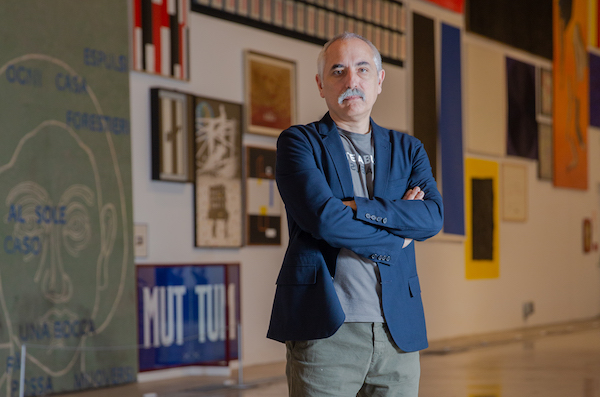Giorgio de Finis is currently the artistic director of MACRO (Museum of Contemporary Art Rome) where he has organized the sprawling MACRO Asilo project. He has opened up this institution to a citywide influx of creative energies, involving hundreds of artists, musicians, filmmakers and other creatives who intersect with the visual arts over the course of a year.
It seems to me that as a man of culture working within the visual arts that you always find yourself in a place where there is a turning point or at least there is a fulcrum. How do you see your role in this transformation of the way we can perceive the value of contemporary art in our lives?
I am an anthropologist, so I come to art with a vision that is different from those from this tradition. I see art in its anthropological role or within the realm of the human. My role right now is to create means through which mechanisms can start up that allow the creation and presentation of art. All this without judging in advance what is high or low, what will be historical, etc. My role is to make openings, create spaces where artists can do their work. In addition, I don’t believe in creating fortresses with flags and banners to declare that we are the most important thing around.
Along with MACRO Asilo, if a visitor came to Rome today and did not want to focus on antiquity but on contemporary art, what would you recommend them to do or go see?
Obviously they should come to the MACRO—especially if they are interested in experimentation. Besides, many things are going on here including exhibitions, conferences, films, music and it’s entirely free. In addition I would suggest going to the MAAM (Metropoliz Museum of the Other and the Elsewhere), a museum—not a museum—where you can imagine another way of experiencing an art collection (http://www.disponibile.org/progetti/69-maam). Also, The National Art Gallery—Galleria Nazionale d’Arte Moderna e Contemporanea (http://lagallerianazionale.com/en/) where they have mixed the collection in an extremely controversial way, no longer referring to the chronology but organizing it more like a rebus that the visitor must try to solve, without the traditional modes used by museums. And then I would recommend going to see a bit of street art. This is everywhere, between walls in San Basilio (http://onthewalls.it/) or in Tor Marancia (http://www.999contemporary.com/big-city-life-tormarancia-a-short-film- about-the-project), all around the Grande Raccordo Anulare (ring road surrounding the city), in short, it is a city where you find these interventions all around town.
How do you think that art and above all how do you think artists can support themselves within a system of income that we have today in the art world?
The market has only and always represented a small part of what happens in the world of art. Artists must necessarily find other systems to live than the art market. I would say that I do not have an answer to your question but I would say that artists have to resist AND must continue to work. Only then can the ways to get that work to the world be found.


